
Long-Term High blood pressure Management: Preventing Damage and Improving Quality of Life
High blood pressure, also known as hypertension, affects millions worldwide, increasing the risk of heart disease and other complications. Discover how incorporating specific foods into your diet can support effective management and promote overall health.
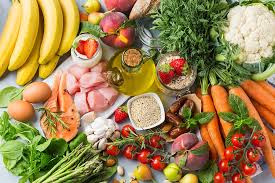
High blood pressure, also known as hypertension, is a common health concern that can increase the risk of heart disease and other complications. While medication and lifestyle changes play a vital role in managing blood pressure, incorporating specific foods into your diet can provide additional support.
Top 10 ideal foods for managing high blood pressure
1. Leafy Greens:
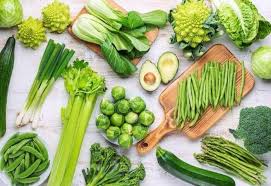
Leafy greens such as spinach, kale, and Swiss chard are rich in potassium, which helps balance sodium levels in the body. The high potassium content can help lower blood pressure. Add leafy greens to salads, smoothies, or sauté them with a little olive oil and garlic as a nutritious side dish.
2. Berries:
Berries like strawberries, blueberries, and raspberries are packed with antioxidants, including flavonoids called anthocyanins. These compounds have been shown to reduce blood pressure and improve overall heart health. Enjoy berries as a snack, add them to yogurt or oatmeal, or blend them into a refreshing smoothie.
3. Beets:
Beets contain nitrates, which are converted to nitric oxide in the body. Nitric oxide helps relax and dilate blood vessels, resulting in lower blood pressure. Roast or steam beets and enjoy them in salads or blend them into a delicious beetroot smoothie.
4. Oats:
Whole grains like oats are a great source of fiber and low in sodium. The fiber in oats helps reduce cholesterol levels and stabilize blood pressure. Start your day with a bowl of oatmeal topped with berries and a sprinkle of nuts for added crunch and nutrition.
5. Greek Yogurt:
Greek yogurt is high in protein and calcium, which are beneficial for maintaining healthy blood pressure levels. Choose plain, unsweetened Greek yogurt and add your own mix-ins, such as fresh fruit or a drizzle of honey, to control the sweetness and enhance the flavor.
6. Salmon:
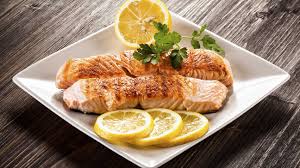
Salmon is heart-healthy fish rich in omega-3 fatty acids, which have been shown to reduce inflammation and lower blood pressure. Aim to include fatty fishlike salmon in your diet at least twice a week. Grill or bake salmon with a squeeze of lemon and a sprinkle of herbs for a flavorful and nutritious meal.
7. Garlic:
Garlic has long been recognized for its potential to lower blood pressure. It contains compounds that help relax blood vessels and improve blood flow. Add fresh garlic to your cooking or try roasted garlic as a flavorful addition to various dishes.
8. Lentils:
Lentils are a versatile legume packed with fiber and plant-based protein. They are also low in sodium and fat. Including lentils in your meals provides a filling and nutritious option that supports healthy blood pressure. Use lentils in soups, stews, salads, or as a meat substitute in recipes like lentil burgers or tacos.
9. Dark Chocolate:
Indulging in a small amount of dark chocolate can have cardiovascular benefits, thanks to its high cocoa content. Dark chocolate contains flavonoids that improve blood flow and help lower blood pressure. Opt for dark chocolate with a cocoa content of 70% or higher and enjoy it in moderation as a treat.
10. Olive Oil:
Replace saturated and trans fats with heart-healthy olive oil in your cooking. Olive oil is rich in monounsaturated fats, which can help lower blood pressure and reduce the risk of heart disease. Use it as a dressing for salads, a drizzle over roasted vegetables, or as a healthy fat for sautéing.
11. Bananas:
Bananas are rich in potassium, a mineral that plays a key role in regulating blood pressure. Potassium helps counterbalance the effects of sodium, promoting healthy fluid balance in the body. Enjoy bananas as a standalone snack, slice them over oatmeal or yogurt, or blend them into a creamy smoothie.
12. Kiwi:
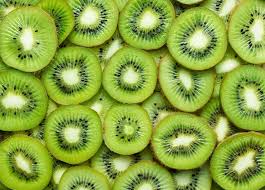
Kiwi is a nutrient-dense fruit packed with vitamin C, fiber, and potassium. The high potassium content in kiwi contributes to maintaining healthy blood pressure levels. Enjoy kiwi on its own, slice it into fruit salads, or blend it into a refreshing green smoothie.
13. Pomegranates:
Pomegranates are rich in antioxidants, including polyphenols, which have been linked to lower blood pressure levels. The fruit and its juice have been shown to reduce systolic blood pressure. Enjoy pomegranate seeds as a snack, sprinkle them over salads, or enjoy a glass of freshly squeezed pomegranate juice.
14. Quinoa:
Quinoa is a protein-rich whole grain that is also a great source of fiber and magnesium. Magnesium plays a role in relaxing blood vessels, contributing to healthy blood pressure. Use quinoa as a base for salads, incorporate it into stir-fries, or enjoy it as a side dish.
15. Walnuts:
Walnuts are a heart-healthy nut option rich in omega-3 fatty acids, fiber, and antioxidants. Omega-3 fatty acids have been associated with lower blood pressure levels. Enjoy walnuts as a snack, sprinkle them over salads or oatmeal, or add them to homemade granola bars.
16. Turmeric:
Turmeric contains a compound called curcumin, which has anti-inflammatory properties and may help improve blood vessel function and lower blood pressure. Add turmeric to curries, stir it into warm milk for a soothing beverage, or sprinkle it over roasted vegetables.
17. Celery:
Celery is a crunchy vegetable that contains compounds called phthalides, which can help relax the muscles in and around the arterial walls, promoting lower blood pressure. Enjoy celery sticks with a dip, add them to salads, or incorporate them into soups and stews.
18. Flaxseeds:
Flaxseeds are rich in omega-3 fatty acids, fiber, and lignans. The combination of these nutrients can help lower blood pressure levels. Ground flaxseeds can be added to smoothies, sprinkled over yogurt or oatmeal, or used as an egg substitute in baking recipes.
19. Edamame:
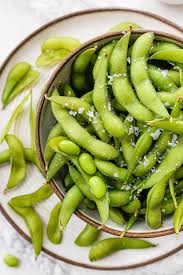
Edamame, young soybeans, are a great plant-based protein source and contain minerals such as potassium and magnesium. These minerals contribute to maintaining healthy blood pressure levels. Enjoy edamame as a snack, incorporate them into stir-fries, or add them to salads.
20. Watermelon:
Watermelon is a hydrating fruit that contains an amino acid called citrulline, which helps relax blood vessels and improve blood flow. Enjoy watermelon slices as a refreshing snack, blend them into a hydrating smoothie, or use them in fruit salads.
So, remember to combine these foods with other healthy lifestyle choices, such as regular exercise, maintaining a healthy weight, and reducing sodium intake, for optimal blood pressure management. These foods should be part of an overall balanced diet and healthy lifestyle. Consult with a healthcare professional or a registered dietitian for personalized guidance on managing high blood pressure and to create a tailored plan that suits your specific needs. By making smart food choices, you can take positive steps toward maintaining a healthy blood pressure and overall cardiovascular well-being.
Disclaimer: The information provided in this content is for general informational purposes only. It is not intended as medical or healthcare advice, diagnosis, or treatment. Always seek the advice of a qualified healthcare professional with any questions you may have regarding a medical condition or healthcare decisions.
















